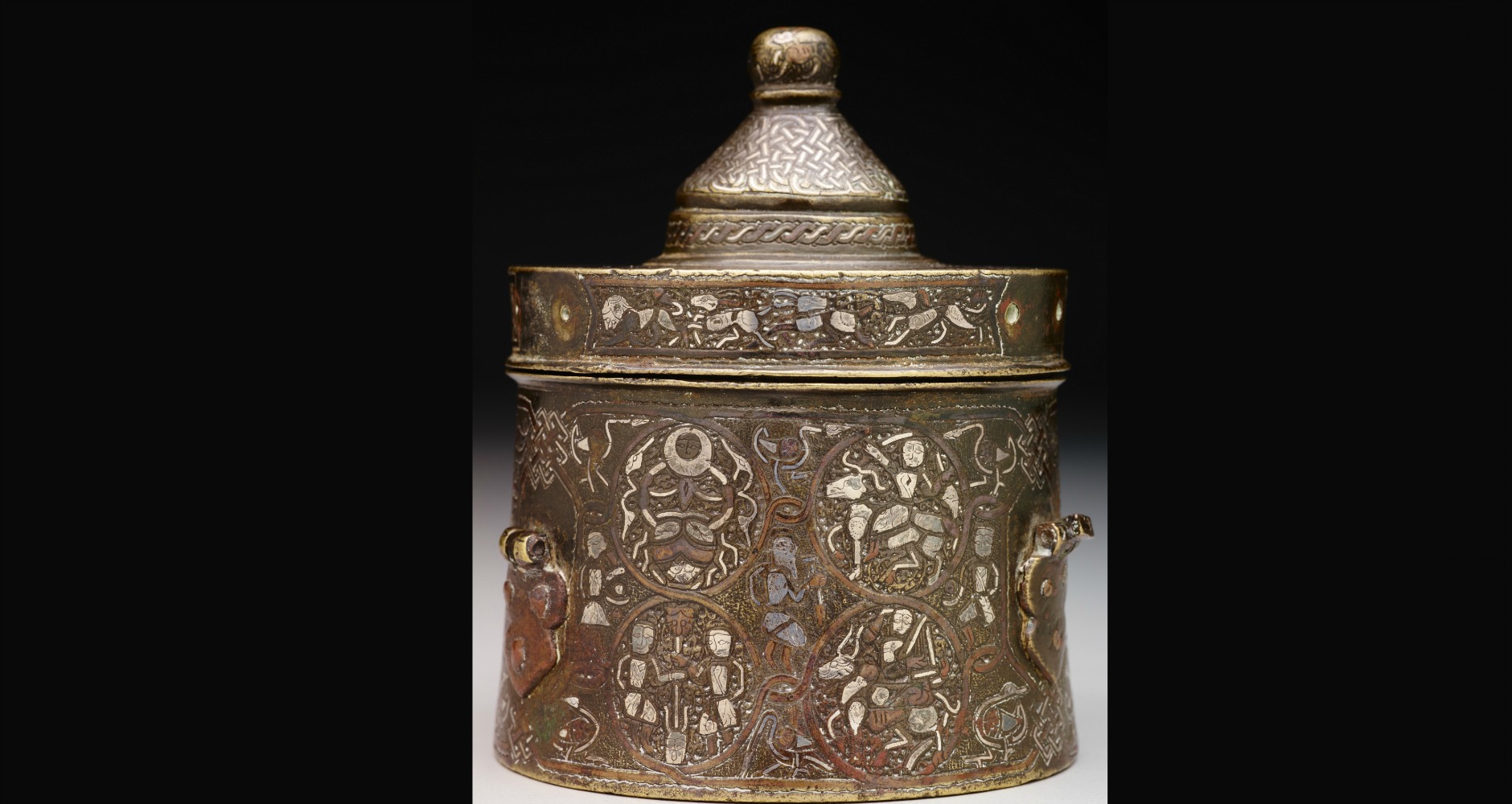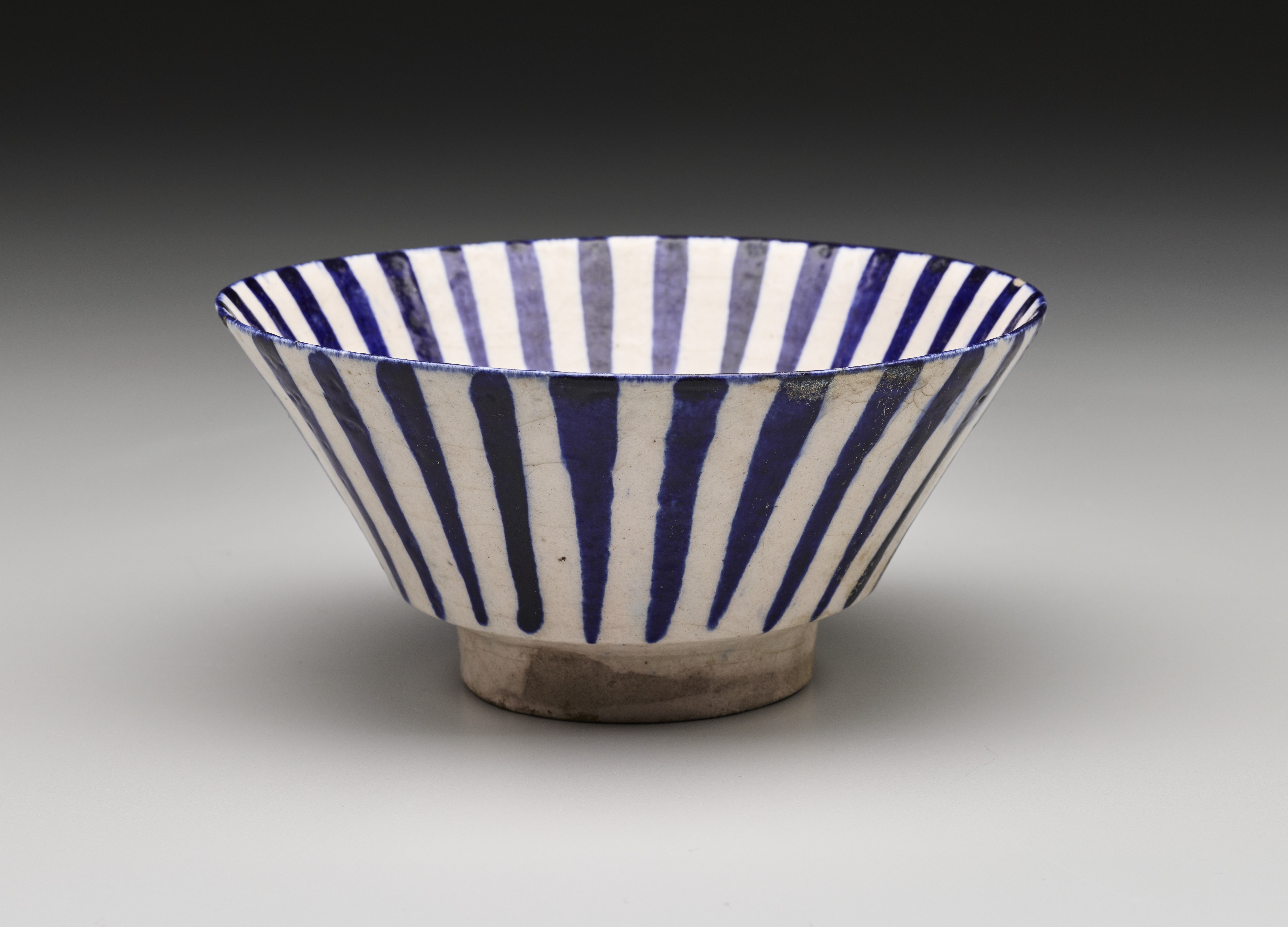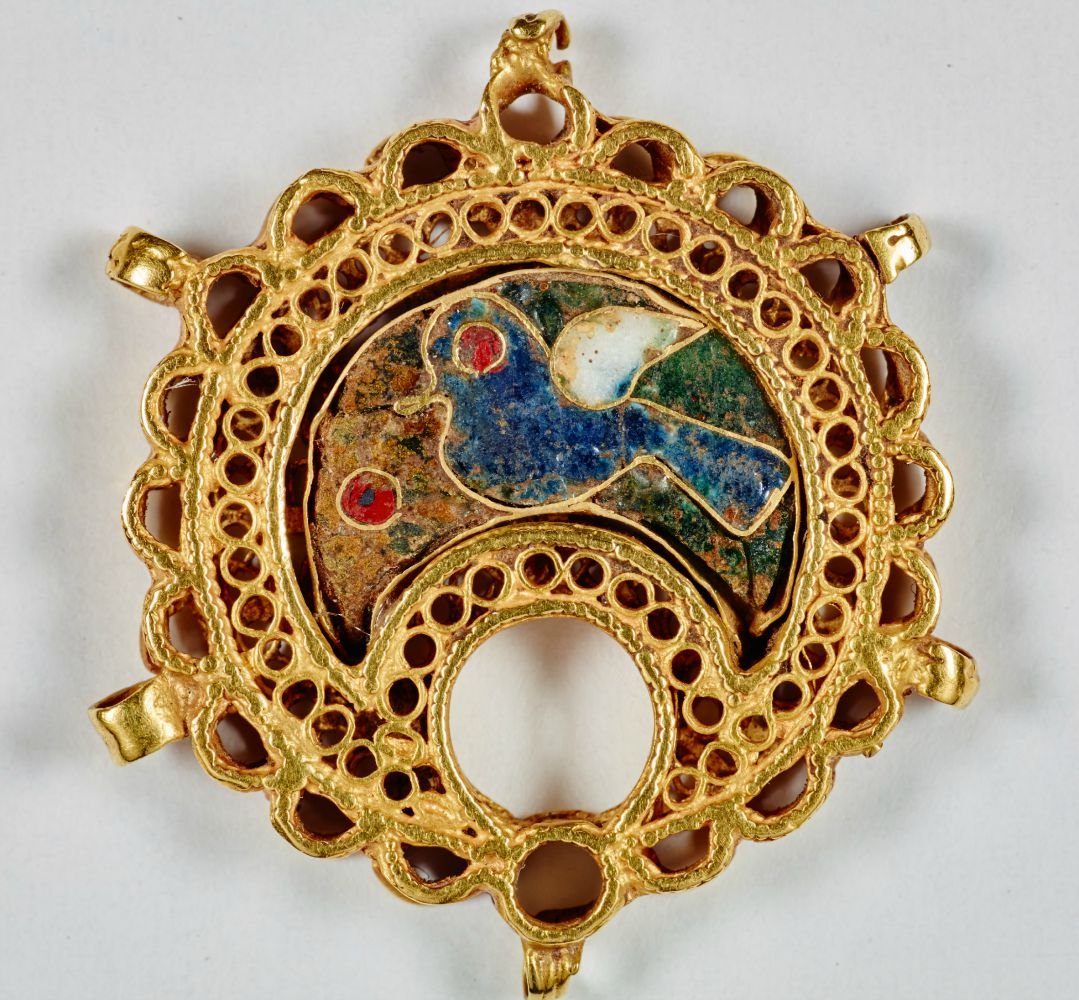State Of The Arts: The New Keir Collection Gallery At The DMA
ArtandSeek.net May 12, 2017 63Three years ago, when the Dallas Museum of Art acquired the Keir Collection of Islamic Art on an extended loan, it made international headlines. The Keir is one of the great private collections of Islamic art – giving the DMA supposedly the third largest in the US, period. Now the DMA has devoted a new gallery to the collection. Here to talk about it are Art&Seek’s Anne Bothwell and Jerome Weeks.
Jerome, we know the Keir Collection is a very big deal. It has two thousand items, spanning some 13 centuries. And we’ve seen some of it already, in a show two years ago called ‘Spirit and Matter.’ So what’s important about this new exhibition?

Inkwell, Iran, late 12th–early 13th century, bronze inlaid with silver and copper
A major reason they can put 150 pieces into that gallery is the size of these artworks. They’re all fairly small, everyday items – books, pottery, jewelry, rugs. But some are tiny, and the layer of detail they have is astonishing. The DMA even provides magnifying glasses, just so you can see the incredibly fine gold threads in the rugs. Or how beautifully detailed the illustrations are in the books. You’ll see this tiny image of a man and realize you can actually make out the patterns in the robe he’s wearing.
You mention Persian rugs and patterns. That’s something else that’s striking. The exhibition is organized according to different items. We start with books, move to ceramics, then metalware and rugs. And we go from the 9th century all the way through to the 17th century. Yet we constantly see the same patterns, the same figures repeated over and over.

Bowl with stripe design in blue glaze on white ground. 12th–13th century
Did you have a favorite in the show?
I think my favorite item may have been this beautiful, tiny gold pendant of a bird. It’s barely an inch tall.
Which is something we need to point out. This is Islamic art, and that represents a remarkable commitment from the DMA, given our current political climate – here and in the Middle East. The number of items listed as originating in Mosul gives you a heart-sinking sense of what the massive destruction of that entire region – from Syria to Afghanistan – has meant for this cultural inheritance. But the Keir gallery is also a commitment that makes sense, given the direction of our population. More Muslims live in Texas than in any other state. A year ago, I was in a cab on the way to DFW and learned the driver was Muslim. I told him, Oh, I’ve visited the mosque! Meaning, of course, the big one in Richardson, the Islamic Association of North Texas. And he said, Which one? There are more than 20 just in the immediate Dallas area.
Well, I think we both agree the new Keir Collection of Islamic Art Gallery at the DMA is a welcome and beautiful addition.

Pendant, Egypt: Fatimid period, 11th century, metal









